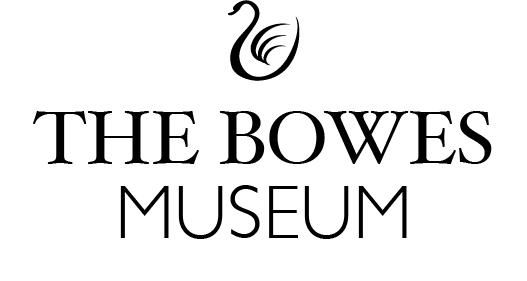
Portrait of Philip IV
Philip IV (1605–65), son of Philip III and Margaret of Austria, was crowned King of Spain in 1621. Supported by the Count-Duke of Olivares as first minister for the first twenty-two years, Philip ruled until 1665. Although the power of the Spanish Habsburgs gradually declined during this period, Philip’s reign produced some of the most significant Spanish artists of all time. The most prominent was Diego Velázquez (1599–1660), who was appointed court painter in 1623 and made a Knight of Santiago in 1658.
This bust-length portrait is an inferior nineteenth-century copy of one of the last portraits of Philip IV painted by Velázquez in around 1653 (now in the Prado Museum, Madrid). It shows the King with visible signs of ageing: flaccid skin, watery eyes, and a double chin. The emphasis on the King’s face emerging from a dark background, his sombre clothing, and the restrained colour range are reminiscent of Velázquez’s first portraits of the subject dating from the mid-1620s. His costume features the golilla, a simple white collar, which Philip IV had introduced as part of his reform of the court when he came to power. Philip does not wear the pendant of the Golden Fleece, the emblem that features in earlier portraits of the Habsburg kings. Despite this absence, viewers would have recognized him by his distinctive facial features, especially the long chin and prominent lip.
This austere image of the older King was disseminated through many copies painted by Velázquez’s pupils and through engravings. Velázquez painted a similar portrait of the King only a few years later (c. 1656, National Gallery, London).
Although The Bowes Museum copy does not do justice to the original portrait, it has been included in this exhibition to offer an insight into portraiture under Philip IV. Velázquez’s style is marked by free brushwork and subtle changes in colour, tone, and light. By contrast, the nineteenth-century artist returns to linearity. The facial features are more clearly defined, the shadows pronounced, and the lips are painted in a garish red. He has also eliminated much of the space surrounding the head.
Velázquez was the most influential Spanish old master. In the nineteenth and twentieth centuries his work had an enormous impact on such artists as Édouard Manet, James McNeill Whistler, John Singer Sargent, Joaquín Sorolla, Pablo Picasso, and Francis Bacon—to name but a few. Many felt compelled to travel to Madrid to study and copy his works in the Prado Museum, which opened its doors in 1819. Velázquez’s most famous work is Las Meninas (1656), which continues to inspire artists, writers, and philosophers to this day.
The inscription at lower right suggests that the portrait was painted by Eugène Delacroix, the French Romantic painter who travelled to Spain and North Africa in 1832 as part of a French delegation to Morocco. The signature was only revealed during the cleaning of the portrait, but its authenticity is questionable. It may have been added at a some point so as to add value to the portrait.
 Click to zoom and pan
Click to zoom and pan
...
Your feedback is very important to us. Would you like to tell us why?
We will never display your feedback on site - this information is used for research purposes.
Artwork Details
Title
Portrait of Philip IV after Velázquez.
Artist
Unknown artist, after Diego Rodríguez de Silva y Velázquez (Seville, 1599 – Madrid, 1660).
Date
Nineteenth century.
Medium and Support
Oil on paper laid down on panel.
Dimensions
39.5 x 29 cm.
Marks and Inscriptions
Lower right: Delacroix d'après Velasquez.
Acquisition Details
On loan to The Bowes Museum from the Schorr Collection.
Previous Owners
In an anonymous sale, London, Bonhams, 8 December 2004, lot 119, illustrated, as circle of Velázquez.
Institution
The Bowes Museum, Barnard Castle, B.M.69.
Bibliography
Leticia Ruiz Gómez, ‘Court Portraits in the Spanish Monarchy (1530–1660)’, in The Spanish Portrait: From El Greco to Picasso, ed. Javier Portús (Madrid: Museo Nacional del Prado, 2004), pp 92–119;
Paul Stirton, ‘The Cult of Velázquez’, in The Discovery of Spain: British Artists and Collectors, Goya to Picasso, ed. David Howarth (Edinburgh: National Galleries of Scotland, 2009), pp. 107–11.
